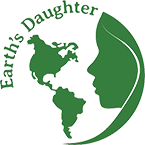How To Determine Your Skin Type?

It's essential to know your skin type if you want healthy and flawless skin. Knowing your skin type allows you to select the right products and customize a skincare regimen that will work best for you. The main skin types to consider include: dry, oily, combination, normal, acne-prone, and sensitive. You might be wondering how in the world you’ll ever differentiate between all these skin types! But don’t worry. There are simple ways to determine your skin type.

GUIDE TO SKIN TYPES:
- Oily skin refers to skin that has excess oil, most commonly throughout the t-zone of the face (forehead, nose, and chin.) Oily skin tends to look shiny, feel greasy, and is often prone to blemishes and breakouts.
- Normal skin is well-balanced - not too dry or too oily. Those with normal skin are not typically prone to breakouts or flakiness and tend to have a balanced t-zone.
- Combination skin has areas that are both dry and oily. For example, skin is typically shiny on the forehead, nose and chin, while appearing dry or normal on the cheeks.
- Dry skin is generally rough, scaly, flaky, itchy or irritated with an overall dehydrated look and feel.
- Sensitive skin varies widely from person to person but is often characterized by visible redness and dryness. Sensitive skin may not always show visible signs and may simply have feelings of discomfort.
METHODS TO DETERMINE SKIN TYPES:
The Bare-Faced Method
Cleanse your face thoroughly with a mild cleanser and gently pat dry. Leave skin bare (and do not apply any additional moisturizers, serums or treatments). After 30 minutes, examine your cheeks, chin, nose and forehead for any shine. After another 30 minutes, evaluate whether your skin feels parched, especially if you smile or make any other facial expressions. If your skin feels tight, your skin is likely dry. If there is noticeable shine on your nose and forehead, your skin is mostly likely normal/combination. If there is shine on your cheeks in addition to your forehead and nose, you most likely have oily skin.
The Blotting Sheet Method
This method is much faster and often an excellent differentiator between oily and dry skin types. Gently pat a blotting paper on the different areas of your face. Hold the sheet up to the light to determine how much oil is visible. If the sheet picked up little to no oil, you most likely have dry skin. If the blotting sheet reveals oil from the forehead and nose areas, your skin is normal/combination. Finally, if the blotting paper is saturated with oil, it is extremely likely that you have oily skin.
